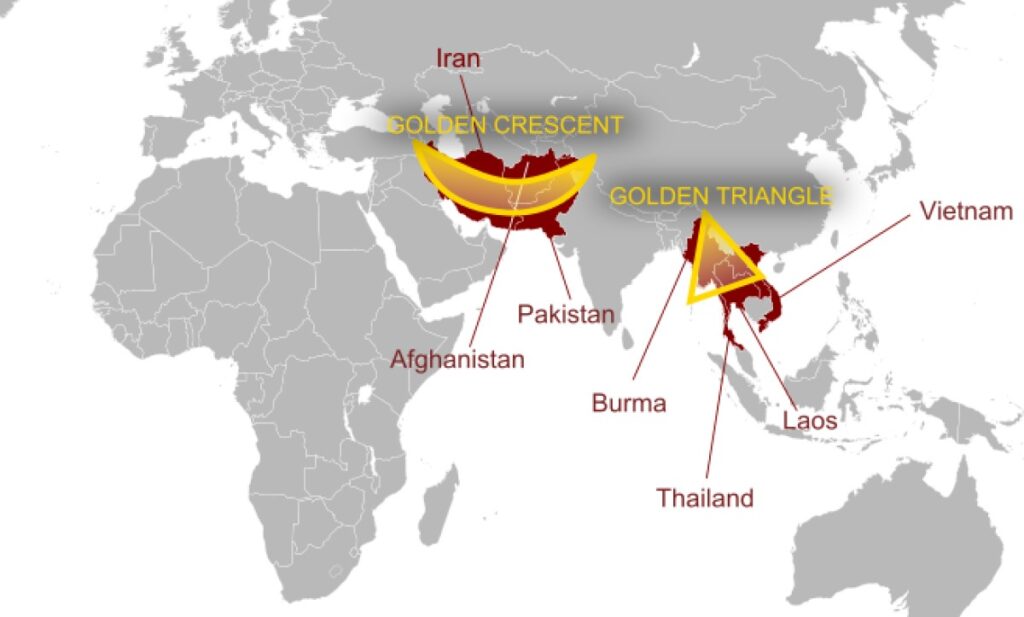The World Drug Report 2021
Context:
Recently, the United Nations Office on Drugs and Crime (UNODC), in its World Drug Report 2021, has highlighted that the lockdown restrictions during Covid-19 have accelerated drug trafficking using the Internet.
Key Highlights World Drug Report 2021:
- As per the report, 36 million people suffered from drug use disorders.
- In last 24 years, cannabis potency had increased by four times in some parts of the globe.
- Percentage of adolescents who perceived drug as harmful has reduced by 40 per cent.
- Despite that, cannabis use is associated with a variety of health and other harms, particularly among regular long-term users.
- Drug Report highlight the need to close gap between perception and reality to educate young people about harmful effects of drugs and safeguard public health.
- Percentage of Δ9-THC, main psychoactive component in cannabis, has increased from six per cent to 11 per cent in Europe between 2002-2019.
The United Nations Office on Drugs and Crime (UNODC) :
UNODC is a United Nations office that was established in 1997 as the Office for Drug Control and Crime Prevention by combining the United Nations International Drug Control Program (UNDCP) and the Crime Prevention and Criminal Justice Division in the United Nations Office at Vienna. and was renamed the United Nations Office on Drugs and Crime in 2002.
The agency’s focus is the trafficking in and abuse of illicit drugs, crime prevention and criminal justice, international terrorism, and political corruption. It is a member of the United Nations Development Group. In 2016–2017 it had an estimated biannual budget of US$700 million.
- It was established in 1997 and was named as a United Nations Office on Drugs and Crime (UNODC) in 2002.
- It acts as the Office for Drug Control and Crime Prevention by combining the United Nations International Drug Control Program (UNDCP) and the Crime Prevention and Criminal Justice Division of the United Nations Office at Vienna.
Cannabis is More Potent but Fewer Young People See it as Harmful:
- In the last 24 years, cannabis potency had increased as much as four times in some parts, even as the percentage of adolescents who perceived the drug as harmful fell by as much as 40%.
- The major psychoactive constituent in cannabis, Δ9-THC, is responsible for the development of mental health disorders, in the long-term.
Which age group is vulnerable?
As per the latest report, about 5.5 percent of population aged 15 and 64 years have used drugs at least once in 2020. While, 36.3 million people (13% of total number of persons who use drugs) suffered with drug use disorders.
Reasons for Increase in Drug Use:
- Drug traffickers have quickly recovered from initial setbacks caused by lockdown restrictions and are operating at pre-pandemic levels once again.
- It is driven in part by a rise in the use of technology and cryptocurrency payments, operating outside the regular financial system.
- Contactless drug transactions, such as through the mail, are also on the rise, a trend possibly accelerated by the pandemic.
- Vendors play a cat-and-mouse game with law enforcement by marketing their products as “research chemicals” or advertising “custom synthesis”.
Vulnerability of India
- India is vulnerable to the trafficking of narcotics as it is sandwiched between the ‘Golden Crescent’ and the ‘Golden Triangle’, the major opium production regions in the world.
- The Golden Crescent region of the South comprises Afghanistan, Iran and Pakistan. The Golden Triangle is the area where the borders of Thailand, and meet at the confluence of the Ruak and Mekong rivers.

Relate International Initiatives
- International Day Against Drug Abuse and Illicit Trafficking is celebrated every year on 26th June.
- Single Convention on Narcotic Drugs, 1961.
- The Convention on Psychotropic Substances, 1971.
- The United Nations Convention against Illicit Traffic in Narcotic Drugs and Psychotropic Substances, 1988.
- India is a signatory to all three and has enacted the Narcotics Drugs and Psychotropic Substances (NDPS) Act, 1985.

